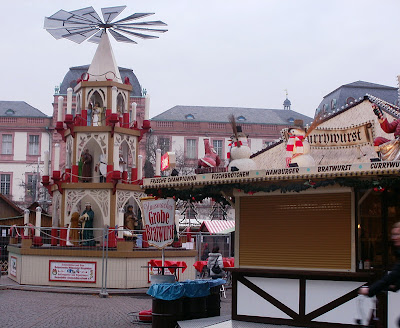 |
| The new ones that I like to call "Trend Setters." |
Promise me right now that you won’t judge me too harshly for what I’m about to reveal. I know I shouldn’t share this, but am hoping that anyone reading this will find me quirky rather than psychotic. But like Sue on The Middle, I think of my curlers as my friends.
For those that haven’t seen The Middle, Sue is an extremely awkward teen-aged girl who wears garish childish sweaters and who has no clue how to fit in with her peers. In the episode I refer to, the family is collecting things to put in a yard sale and Sue’s brother Axl taunts her for not being able to get rid of her old curlers, who she thinks of as friends.
When I first saw that episode, my mouth dropped open. I’d thought I was the only one! I know people often personify inanimate objects, but this was the first time I had proof that it entered the mind of someone (albeit a writer on the show who thought it fit the personality of Sue) that curlers could be considered ‘friends.’
My Clairol Kindness rollers have been with me a long time. My husband thinks I’m weird because I like to curl my hair in the morning and then switch them up so none feel neglected. Plus, I don’t use them all when I set my hair and want to make sure that everyone gets a chance to make me beautiful. It’s important to them.
I’m missing one of the smallest rollers. I like to pretend that she wanted to do something else with her life. I let the curlers think that’s an option, rather than letting them know that I think she was kidnapped or abandoned somewhere along the way in my life. I’ve had those curlers a long time.
Then I killed them in Germany.
When I arrived, I looked through my suitcase frantically. Where was my converter? I had my adaptor, but couldn’t find the converter necessary for wattage differences on smaller items like curlers and blow dryers. I must have left it at home. I bit my lip and debated a moment, but then plugged the cord into the wall like I’d done a thousand times before.
I could smell the motor burning as my curlers got hot. I quickly yanked the plug out of the wall, then wrapped my hair around my faithful friends. That was the last time. The next day, my Clairol Kindness friends didn’t heat up at all. They were dead.
Stupidly, the day I’d killed them was a Saturday. Now I had to go to work with flat, yet paradoxically frizzy hair. I was so angry at my curlers for dying. How could they leave me like that, right when I needed them? Like anyone grieving, I went into denial and tried plugging them in again, bargaining with the big hair salon in the sky to let them work again just this once. Finally, acceptance. They were gone.
To make matters worse, part of my work day was a trip to a hair salon. I was mortified. I hung my ponytailed head in shame and hoped that none of the hairdressers noticed me. I could imagine the disgust on their faces. I thought one of them might yank me by the hair and plunk me down into a salon chair so that they could fix me. I secretly wished they had, though I didn’t have time. They let me pass and I left the building, tightening my ponytail and wishing it at least looked sleek. I spent the remainder of the trip sporting rubber-banded frizz.
When I finally had to pack for the trip home, I glanced at my curlers and felt a sad pang in my chest that I wouldn’t be taking them with me. At first I couldn’t bring myself to put them in the wastepaper basket, but then decided that like Travis, I had to put Old Yeller down. I didn’t want them to sit in lost & found, feeling abandoned and wondering when I’d retrieve them. So I said my goodbyes (silently, in my head; I’m not crazy) and put them in the garbage for the maid.
Once I got home, I hurried to the store for a new set of curlers. My old curlers were probably 20 years old and yet I expected to see a new set of spiky white plastic Clairol Kindness curlers on the shelves. It was not to be. In their place were sets of modern, high-tech(ish) curlers with heat sensitive buttons and foam wraps. I bought the ones that looked easiest to use and headed home to try them out.
My new curlers are not my friends. They’re more like trendy girls in school, with their purple and black foam and shiny gold clips. They’re übercool. I’m not. They probably talk about me when I leave the bathroom. I think they’re messing with my hair on purpose because I’m having one bad hair day after another. I feel pressured to go buy some salon shampoo so they’ll like me.
I miss my Clairol Kindness friends. I take comfort in the fact that fictional Sue on The Middle knows what I’m going through. I just hope my hair doesn’t actually look like hers.











































